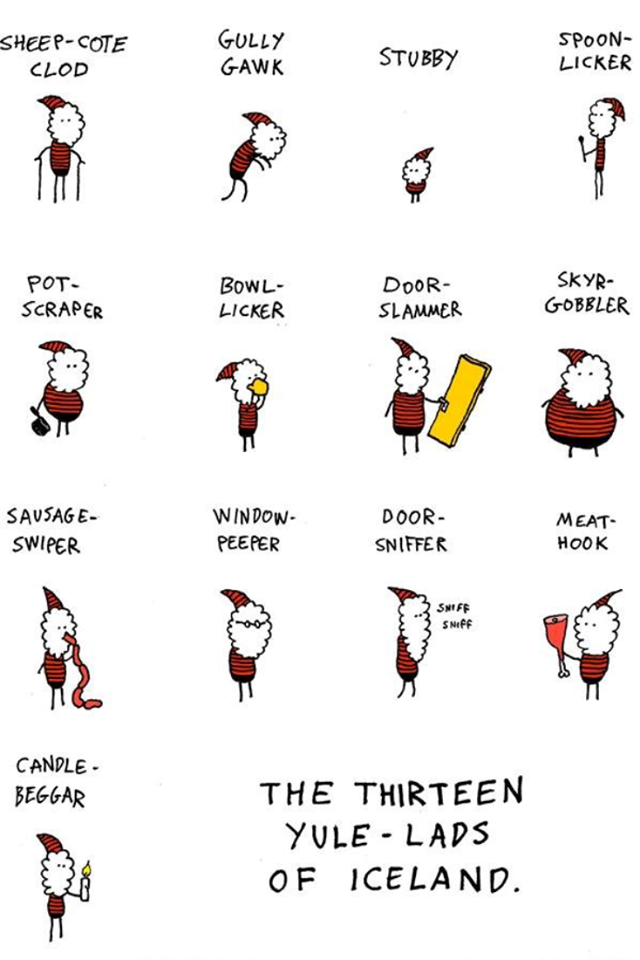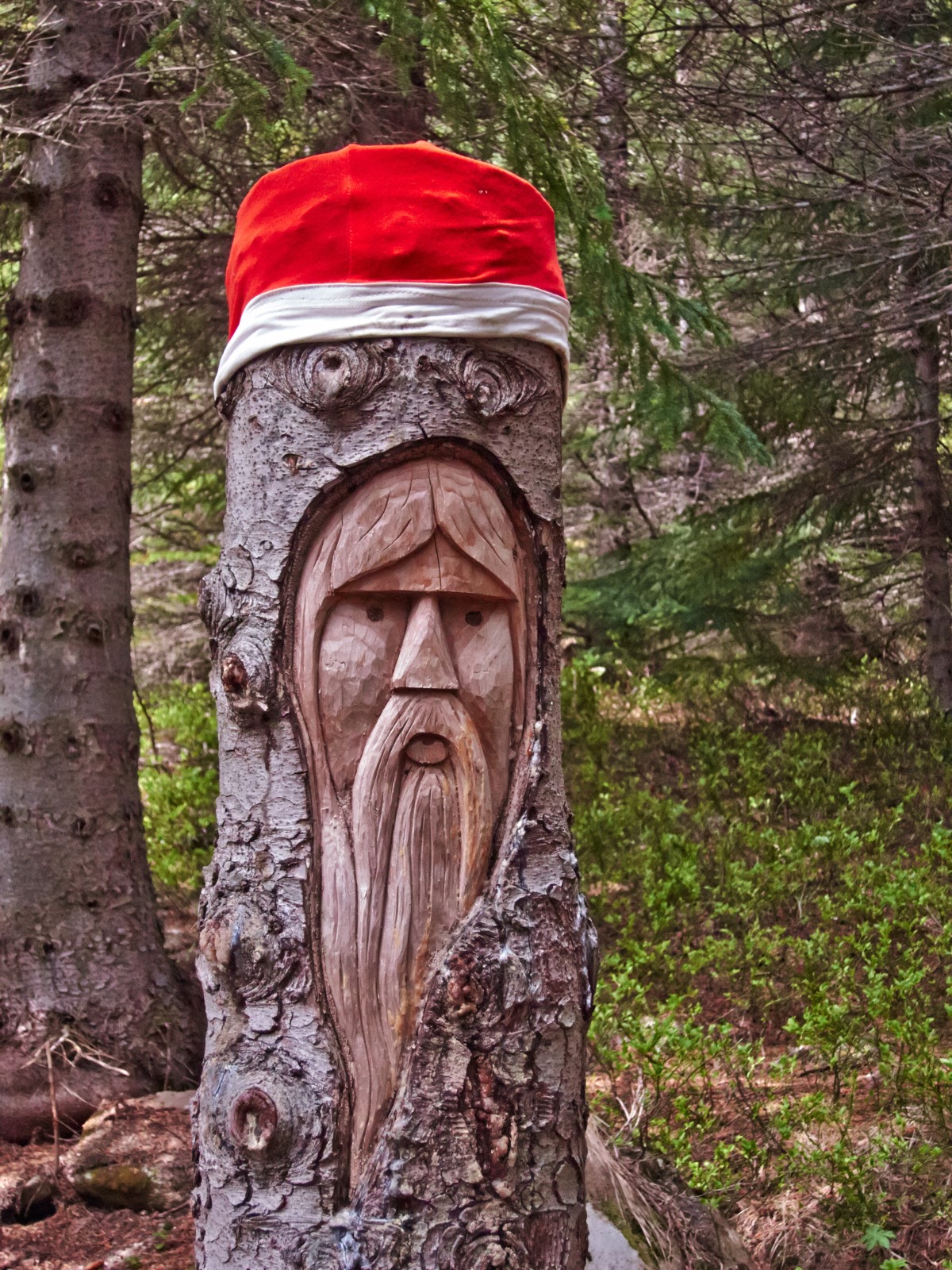A big portion of my Christmas decorations consists of Santa Clauses. I have a very strong connection to the country of the Santa Clauses in the Fairy Tale Dimension and that explains why I am such a big fan of the red and white clad figures. I am not the only fan of this country. Thousands of movies, books and songs about Santas attest to the love for this fairy tale country. The Santa country is one of the biggest and most divers fairy tale countries in the Fairy Tale Dimension. Hundreds of different Santa Claus stories are played there.
The Christian Santa Claus
A lot of different pagan rituals and stories around the winter solstice were absorbed by Christianity over the centuries. The Christian Santa figure got his name from Saint Nicholas. He lived in the Roman Empire in the fourth century and he was a bishop who was famous for his miracles. Originally from a wealthy family he distributed his wealth to the poor. He set an example and sharing and helping have been a big part of our Christian Christmas traditions ever since.
The Santas living in the Fairy Tale Dimension are not always the benevolent present distributors I am so fond of. Today I want to introduce you to some pretty scary Santas who are trolls. They are part of the Iceland Christmas traditions.

Life in Iceland used to be very hard
Until the twentieth century life in Iceland was very harsh and the people were very poor. The hundreds of years old Icelandic sagas mirror the adverse environment in which Icelanders had to fight hard for their survival. Only a limited variety of food grew in the cold climate and people relied mainly on fish and sheep to sustain them. Hunger was common.
Perhaps because of this history Iceland has the most hair-raising Christmas creatures I have heard of: The Icelandic Santa Claus family: The Yule Lads (jólasveinar in Icelandic) and their parents.
The 13 Icelandic Santas are living in a family
According to different legends The Icelandic Yule Lads live either in the highlands in the middle of Iceland or in the Dimmuborgir region in the north near lake Mývatn with their troll parents Grýla and Leppalúði and their pet-beast the Christmas Cat. There are historical records of up to 70 Yule Lads, but only 13 Yule lads have survived until today. Even though they are not as bad as their parents, they have very bad manners. Considering who raised them this is no wonder.
The parents of the Icelandic Yule Lads
Grýla – the mother – is a big troll. She looks rather intimidating and is reported to have a tail and multiple heads. As trolls are often cannibals she likes human meat and hunts for misbehaving children during the Christmas season, whom she cooks in a large pot.
Leppalúði is Gryla´s third husband and the father of the 13 Yule lads. He is said to be a useless chap. This dumb skinny troll does whatever Grýla commands him to do. He helps her to catch naughty kids for her stew and carries them home in his big sack.
The Christmas Cat
As if the parents are not frightful enough, there is also the scary Christmas Cat (Jólakötturinn) to evade during the Christmas season. This giant black cat shares Grýla´s taste for humans. She is rumoured to devour everybody who does not receive a new piece of clothing before Christmas. So if you don’t want your loved ones to be eaten by a giant troll cat, you better give them at least a pair of new socks.
In 1932 Jóhannes úr Kötlum wrote the still popular poetry book about the Yule Lads. There he gives descriptions of each of the 13 Christmas trolls and describes their comings and goings. Some Icelanders still know it by heart. Hallberg Hallmundsson translated this long poem in English.
The Christmas Season in Iceland
The Icelandic Christmas season lasts for 26 days, from the 11th of December until the 6th of January. It starts when the first Yule Lad arrives 13 days before Christmas Eve and finishes when the last one of them leaves on the 6th of January. They arrive singly until Christmas Eve and then leave in the same order starting on Christmas Day one by one to head home again not to be seen until next season.
The 13 Yule Lads of Iceland
The Icelandic troll Santa Clauses get their peculiar names after their individual characteristics. They are skinny because they are always hungry. Their mother does not seem to feed them well. These guys are troublemakers who steal food and play tricks on people. This is why the Icelanders have to look well after their food during the Christmas season.
Besides being a nuisance and stealing food the Yule Lads are also very ugly and stupid. Here are the descriptions of each Yule Lad in order of the night he visits:

1. Sheep-Cote Clod (Stekkjarstaur)
He has two wooden legs, which make him slow to move. He likes to harass the sheep that have been brought in for the winter. In Icelandic farms the barn used to be part of the house so that the sheep running around in panic could easily be heard.
2. Gully-Gawk (Giljagaur)
He hides in gullies looking for a chance to steal milk from the cows when the farmers do not pay attention.
3. Stubby (Stúfur)
As his name suggests he is very short. He tries to steal pans that have food dried on them because he loves to eat the crusts.
4. Spoon-Licker (Þvörusleikir)
He is abnormally tall and thin as a rake because he is only eating by licking spoons clean. He prefers the long-handled ones that are used for stirring in big pots.
5. Pot-Scraper (Pottaskefill)
Steals pots to eat the leftovers. To get to the pots he likes to trick children. He makes them think that someone is at the door and when they run to see who it is he sneaks in and snatches the pots.
6. Bowl-Licker (Askasleikir)
When the Bowl-Licker is in the house you can find him lurking under the bed. There he waits until somebody puts a bowl with food on the floor, which was happening a lot in the old days because beds were also used as chairs and there were often no tables. Then he reaches out from under the bed, steals the bowl and eats everything in it.
7. Door-Slammer (Hurðaskellir)
Is a really annoying lad. True to his name he likes slamming doors loudly, preferably at night. When you have just drifted off to sleep he wakes you up with slamming another door.
8. Skyr-Gobbler (Skyrgármur)
When he has been visiting you can easily tell because he leaves his finger marks all over the skyr. He is also a very messy eater so that you have to clean up a lot after him. Skyr is a delicious Icelandic dairy product. Everybody tries to copy it nowadays but in my opinion nobody succeeds in making it taste as good as the Icelanders do.
9. Sausage –Swiper (Bjúgnakrækir)
He hides in the rafts under the roof and raids food from sitting up on a crossbeam. At the first chance he gets he snatches and gobbles up every sausage he can find.
10. Window-Peeper (Gluggagægir)
He is one of the more creepy Yule lads. With his enormous eyes he peers through the windows and steals everything he can see and get his hands on. This makes him perhaps the worst thief of the group.
11. Doorway-Sniffer (Gáttaþefur)
With his huge nose he can make out delicious Christmas treats from far away. He sneaks around outside of Icelandic houses and hopes that someone forgets to close the door so he can get inside to steal the food.
12. Meet-Hook (Ketkrókur)
This Yule lad steals meat by lowering a hook through the chimney. He uses the hook to grab smoked meat that is hanging from the rafts. Luckily his hook is often too short to reach everything.
13. Candle-Stealer (Kertasníkir)
He sneaks up on the children who run around the farm at night with their tallow lights to steal them. These candles were made of fat and he did not want them because of their light but to eat them.
When Christmas is finally there
The Icelanders have a lot of their food stolen gy the Yule lads. They are also tired from waking up several times a night, spooked because of strange sounds coming from the doors, sheep pens, the roof or the stables. They wonder why they cannot find any candles. Still they are lucky not to have been eaten by either Grýla or her cat.
You see that the Christmas season in Iceland is a very scary part of the year. The sun only manages to creep over the horizon for about 4 hours and people imagined all kinds of ghosts lurking outside.
Only ghosts were said to knock on doors at night. In the old days if a visitor came in the dark he went to the window and said: Here is God (Hér sé guð) to distinguish himself from the possibly dangerous beings lurking outside.
The Icelandic Santa Clauses today
The fairy tale of the 13 Icelandic Yule lads, their parents and pet makes me glad that I grew up with stories of benevolent fat red clad Santa Clauses. I feel sorry for the Icelandic children who have been raised with tales of these intimidating dangerous creatures over the centuries.
The old stories are still very much alive today in Iceland and you can meet Icelandic Yule Lads at Christmas parties and schools. Nowadays these lads have softened up though. The Icelandic Santas have even started to leave presents for children in their shoes.

How is your relationship with Santa Claus?
Pictures: private and by Hugleikur Dagsson
© Inge Schumacher


















